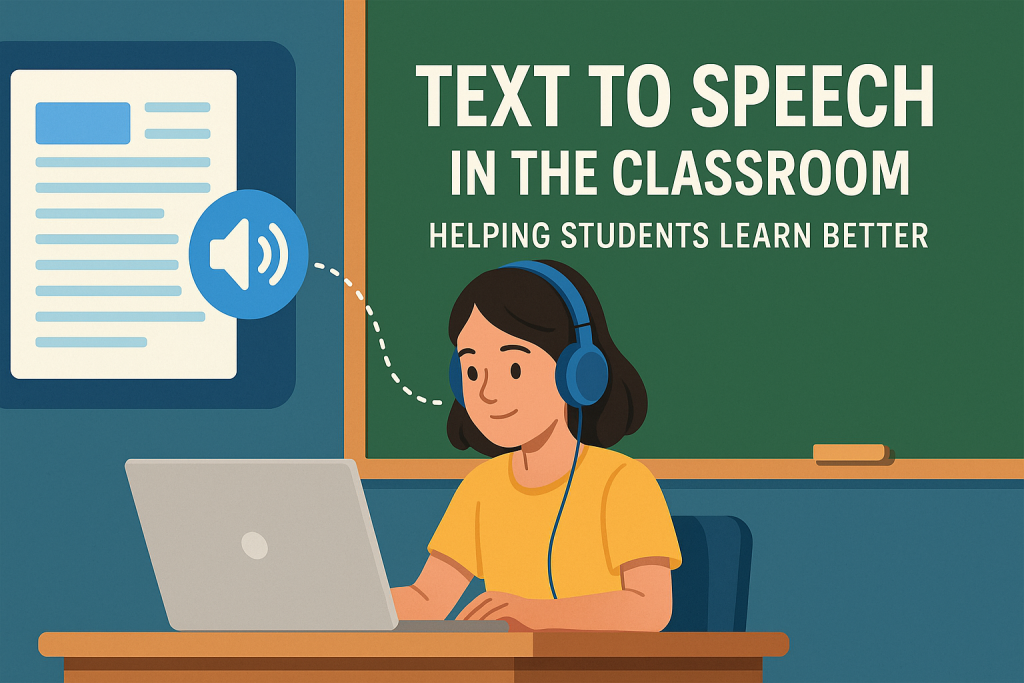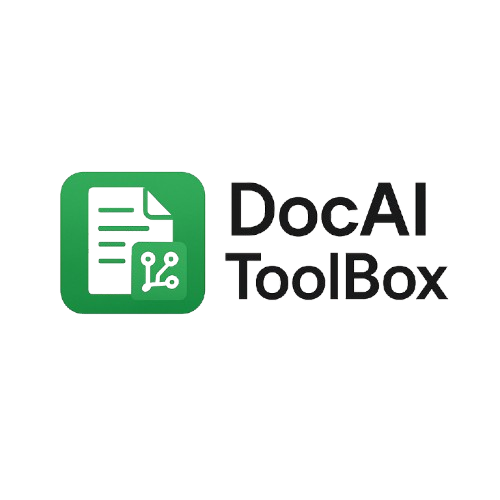Text to Speech in the Classroom: Helping Students Learn Better

Introduction
Education is undergoing a technological revolution. From smartboards and digital assignments to AI-driven tutoring, technology is reshaping the way students learn. One of the most promising and practical innovations is text to speech (TTS) technology. While text to speech was once thought of as a tool primarily for individuals with disabilities, it is now proving to be a powerful educational resource for all students.
In the classroom, TTS can transform static text into engaging spoken content, creating multi-sensory learning experiences that improve comprehension, retention, and accessibility. Whether it’s helping struggling readers, supporting students with dyslexia, or providing ESL learners with an additional layer of language support, text to speech is becoming an essential tool in modern education.
This article explores the role of text to speech in the classroom, how it helps students learn better, and what teachers need to know to make the most of it.
What Is Text to Speech Technology?
Text to speech (TTS) is software that converts written text into spoken words. Using advanced algorithms, natural language processing (NLP), and increasingly AI-powered voice synthesis, TTS tools read digital text aloud with natural-sounding voices.
- How it works: At its core, TTS identifies the words on a page or screen, processes them into phonetic sounds, and outputs audio. More advanced systems integrate contextual cues, tone, and pacing to make the voice sound more human-like.
- Where it’s used: Smartphones, e-readers, language apps, accessibility software, smart assistants like Siri or Alexa, and dedicated learning tools all use TTS.
For the classroom, TTS is accessible through apps, browser extensions, and built-in features of devices like Chromebooks or tablets.
Why Text to Speech Belongs in Education
Education is not one-size-fits-all. Students learn differently depending on their strengths, challenges, and learning styles. Text to speech addresses several critical needs in the classroom:
- Accessibility for Students with Disabilities
- Students with dyslexia, ADHD, or visual impairments can benefit greatly from having content read aloud. It reduces the cognitive load required to decode words, allowing them to focus on comprehension.
- Support for ESL Learners
- Non-native speakers often struggle with pronunciation and comprehension. TTS helps by reinforcing how words sound and are used in context.
- Enhanced Learning for All Students
- Even students without learning challenges benefit from hearing content read aloud. Listening while reading can improve fluency, reinforce comprehension, and boost retention.
Benefits of Using Text to Speech in the Classroom
The advantages of TTS extend far beyond accessibility. Here are some of the most impactful benefits:
1. Improved Reading Fluency
Students can follow along visually while listening, which reinforces word recognition and improves fluency.
2. Multi-Sensory Learning
By combining sight (text) and sound (speech), TTS engages multiple senses, making it easier for students to absorb and remember content.
3. Personalized Learning Pace
Students can pause, replay, or slow down audio to fit their individual learning needs.
4. Reducing Learning Fatigue
Reading dense material can be exhausting. TTS reduces fatigue by providing an alternative method to absorb information.
5. Building Confidence
Struggling readers often feel discouraged. TTS gives them the tools to access content independently, building self-esteem and encouraging participation.
Practical Classroom Applications
Teachers can integrate text to speech in countless ways:
- Reading Assignments Aloud
Instead of struggling through a passage, students can listen to stories, textbooks, or articles, making comprehension easier. - Note-Taking Assistance
Students can listen to lectures or notes read aloud, freeing them from the stress of keeping up while writing. - Language Learning
ESL learners can hear correct pronunciation and intonation while reading text. - Independent Study
Students can use TTS apps at home for homework, revision, or catching up on missed material. - Special Education Support
TTS can be personalized for students with specific learning plans, ensuring inclusivity.
Teacher’s Perspective: How to Implement TTS Effectively
While TTS is powerful, its effectiveness depends on thoughtful implementation. Here are strategies for teachers:
- Choose the Right Tool
Look for solutions that are easy to use, compatible with classroom devices, and provide natural-sounding voices. - Integrate into Lesson Plans
For example, assign reading comprehension exercises where students read along while listening to TTS. - Balance Audio with Reading
Encourage students to use TTS as a support tool, not a replacement for traditional reading skills. - Encourage Responsible Use
Set guidelines so students use TTS effectively, such as replaying difficult sections or using it for study, not shortcuts.
Challenges and Considerations
Like any technology, TTS comes with considerations:
- Technology Access: Not all schools have equal access to devices or internet connectivity.
- Over-Reliance: Students should not substitute listening for reading practice entirely.
- Licensing and Cost: Some premium TTS solutions come with fees that may not be affordable for all schools.
- Privacy Concerns: Ensure the tools comply with data protection standards, especially when dealing with minors.
Case Studies & Real-World Examples
Several schools and districts have already adopted TTS with great success.
- Case Study 1: Dyslexia Support in Elementary School
A school implemented TTS for reading assignments. Students with dyslexia showed marked improvements in comprehension scores within three months. - Case Study 2: ESL Integration in Middle School
Teachers used TTS to help ESL learners follow along in English literature classes. Students reported greater confidence and fluency in speaking. - Case Study 3: Independent Study in High School
High school students preparing for exams used TTS to review dense material. The audio format reduced fatigue and allowed them to study longer.
Best Text to Speech Tools for Teachers and Students
Here are some top TTS tools suitable for classrooms:
- Google Text-to-Speech: Built into Android devices and Chromebooks.
- NaturalReader: Offers natural voices and multiple formats.
- Read&Write by Texthelp: Popular for accessibility in schools.
- Microsoft Immersive Reader: Built into Office and Teams.
- Doc AI Toolbox: A versatile Google Workspace add-on that enables text to speech, image generation, translations, and more — making it easy for teachers to integrate AI tools directly into documents.
The Future of Text to Speech in Education
The future of TTS is being shaped by AI. Emerging innovations include:
- Hyper-Realistic Voices: AI-driven voices that are almost indistinguishable from humans.
- Multilingual Support: Real-time translation and pronunciation for global classrooms.
- Personalized Voices: Students could choose voices that match their preference or even create custom ones.
- Integration with AI Tutoring Systems: Combining TTS with adaptive learning platforms for fully interactive study companions.
As technology advances, TTS will become more natural, affordable, and indispensable in classrooms worldwide.
Conclusion
Text to speech in the classroom is more than a convenience — it is a bridge to better learning. From supporting students with disabilities to enhancing the overall learning experience, TTS offers practical, inclusive, and effective ways to help students succeed.
Teachers who integrate TTS into their lesson plans empower students to learn at their own pace, gain confidence, and engage more deeply with content. As AI continues to refine TTS capabilities, the potential for educational transformation is only just beginning.
If you’re a teacher looking to explore text to speech tools, consider starting small — try free solutions, experiment with integrating TTS into reading assignments, and expand as you see the benefits. Tools like Doc AI Toolbox make it easy to bring these features into everyday teaching, ensuring your students have access to the latest innovations in learning.

